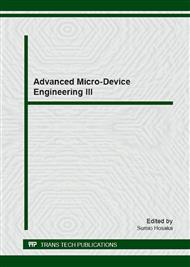p.40
p.46
p.55
p.61
p.66
p.71
p.76
p.82
p.88
Effective Synthesis and Isomerization of Cyclotetrasiloxanetetraol
Abstract:
Recently we have reported the syntheses of a variety of silsesquioxanes including laddersiloxanes and cage silsesquioxanes. As a precursor of these compounds, cyclotetrasiloxanetetraols are very useful. Several groups reported the syntheses of alkyl-substituted all-cis-cyclotetrasiloxanesilanolate that can be converted to all-cis cyclotetrasiloxanetetraols. In addition, there was a report of the isomerization of phenyl-substituted all-cis-tetraphenylcyclotetrasiloxanetetraol by hydrochloric acid to give other three stereoisomers. With an aim to elucidate that the reaction is commonly applied or not to other cyclic silanols, we synthesized all-cis isobutyl cyclic silanol. With investigating the reaction condition, we could obtain this cyclic silanol in better yield than previously published methods. Additionally, stereoisomerization reaction with hydrochloric acid was investigated. With a slightly longer reaction time, isomerization reaction was observed to give other stereoisomers. This is the second example of the stereoisomerization of cyclic silanols.
Info:
Periodical:
Pages:
66-70
Citation:
Online since:
January 2013
Authors:
Keywords:
Price:
Сopyright:
© 2013 Trans Tech Publications Ltd. All Rights Reserved
Share:
Citation:


